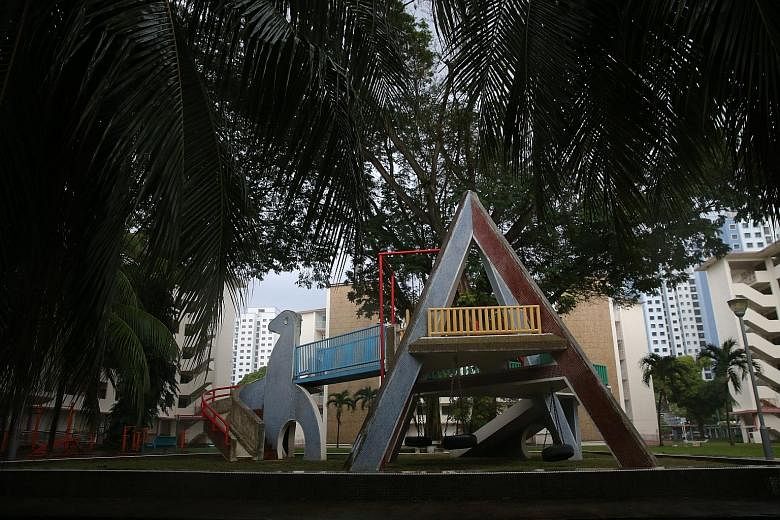Plans for a greener and deeper Singapore were unveiled by the Urban Redevelopment Authority (URA) at a Draft Master Plan exhibition in March.
The plans include a new 50km Greater Rustic Coast running along the northern coast, as well as district-level underground projects.
The Master Plan is a statutory land-use plan that guides Singapore's development in the next 10 to 15 years, and is reviewed every five years.
Other highlights are a 24km "green vein" called the Rail Corridor running through Singapore that will be connected by 2021, as well as a rejuvenation of the central area.
The public had an opportunity from March to June this year to provide feedback and proposals on the draft plan exhibited at the URA's premises. Over 25,000 stakeholders and members of the public visited the exhibition during this time.
Regional plans were also exhibited at Waterway Point, Westgate, Junction 8, Our Tampines Hub and Causeway Point from July to August.
The gazetting of the plan last month concludes its review.
Under the plan, the former Railway Station Staff Quarters and Bukit Timah Fire Station were also gazetted for conservation.
Together with the Bukit Timah Railway Station opposite it, the former quarters will be fitted with amenities to complement the station's use as a space for community activities.
Meanwhile, the former fire station will feature a visitor centre for the nature and heritage attractions in the area. It will be a central point for the network of attractions with connections to Bukit Batok Nature Park and the Rail Corridor.
There are also plans to build deeper.
Besides existing caverns such as the Jurong Rock Caverns - an underground storage facility for liquid hydrocarbons that goes more than 100m deep - there are ongoing studies by JTC Corporation and PUB to identify potential cavern spaces for industrial, utility and storage use.
Why it matters
Minister for National Development Lawrence Wong had noted earlier this year that the Central Business District (CBD) is "largely mono-use" today, with mainly office developments. Under the plan, there will be "a broader mix of uses so that the CBD is not only a place to work, but also a vibrant place to live and play", he said.
To achieve this, the URA will introduce a new CBD incentive scheme offering increased gross plot ratio to encourage the conversion of existing office developments to hotel and residential uses.
This will apply to the Anson Road, Cecil Street, Shenton Way, Robinson Road and Tanjong Pagar areas.
A second scheme - the Strategic Development Incentive - will encourage building owners to work together to comprehensively redevelop adjacent properties.
It will offer an increase in gross plot ratio and flexibility on other development controls.
More housing units are also expected in areas such as Downtown, Marina South and Rochor.
The underground plans are part of a strategy to create spaces for the future, as well as build capacity for growth.
For example, Singapore's first 230kV underground substation will optimise land use by saving ground space for higher-value purposes.
Located next to Labrador Park MRT station, the substation will be integrated with a commercial building above, freeing up 3ha of land above ground for development.
What lies ahead
Outside of the CBD, new homes - both public and private - will be added in mature towns. For example, public housing at Dakota Crescent will be planned around six preserved Singapore Improvement Trust blocks and an iconic dove playground from the 1950s.
Around Farrer Park, familiar landmarks like the Farrer Park Swimming Complex and former Boxing Gym will be retained in recognition of the sporting heritage of the area.
A sports field and park will be integrated with future housing.
And those who desire homes with a sea view may get a chance in the Bayshore district in East Coast.
Singaporeans can also look forward to a greener island. The plan is to have more than 90 per cent of households within a 10-minute walking distance, or 400m, of a park, while a million people will live within 1km of the Rail Corridor.
The corridor will run through the country, connecting Woodlands Regional Centre, which will feature a new agri-food and innovation park, to future housing in Choa Chu Kang, before running through Queenstown down to the Greater Southern Waterfront, a future mixed-use district of over 2,000ha extending from Pasir Panjang to Marina East.
Up north, Lim Chu Kang will be connected to Changi via the coast through the Greater Rustic Coast - a 50km stretch that will link areas of military and industrial heritage, recreation and biodiversity.
Even Orchard Road will become a green urban corridor that connects the Botanic Gardens to Fort Canning Park. Overall, there will eventually be about 1,000ha of more parks and park connectors.



